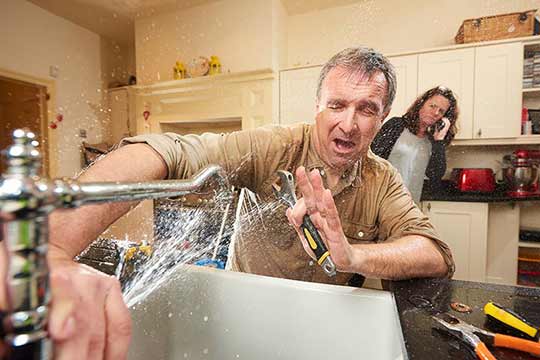
If you want to save money on home maintenance and still be able to solve issues in your home fast, you must become good at DIY. Many of the problems you experience with various features in your home are easy to solve if you are willing to take the time to learn how to fix them, says Keyrenter North Dallas.
Solving minor home maintenance issues will save you money and make your technician’s job easier. You will be able to provide the expert with detailed information to help them narrow down to the root of the problem faster.
That being said, you should never attempt to DIY a problem unless you have first invested the effort to understand the issue entirely. Homeowners often worsen the existing problems in their homes when they try to fix them without first learning the right way to deal with the issues.
Nowhere is this more common than with plumbing problems. Plumbing issues often look easy to fix because of the internet’s many DIY plumbing videos. But one small mistake when solving a plumbing issue can leave your home flooded or without water.
What are homeowners’ common plumbing mistakes, and how can you avoid them?
Plumbing DIY mistakes and how to avoid them
Gluing a painted pipe
When connecting pipe fittings, do not apply glue to a pipe without first removing the paint on that end of the pipe. If there is a thin layer of paint between the two parts, the glue will not adhere properly, and the joint will leak. To avoid this problem, remove the paint on the end of the pipe with paint thinner.
Reusing flexible hoses
Flexible hoses are made of a rubber core within a stainless-steel jacket that protects them from damage. Flexible hoses are the weakest links in your home’s plumbing. They typically have a lifespan of five years and should never be reused.
Using the wrong plunger
It would help if you had separate plungers to remove clogs in your toilet and the kitchen sink. Toilet plungers have a different design than sink plungers. Sink plungers are ineffective for removing clogs in the bathroom because they do not have a flange and cannot seal the hole properly.
Cooling a soldered joint
Never use water to cool a soldered joint; it will defeat the entire purpose of soldering the joint. That is because the rapid temperature change will cause the soldering to crack. Instead of forcibly cooling the joint, give it 30-60 seconds to cool. To know if the solder has cooled, wait until it goes from a shiny to a matte color.
Not disconnecting an outside hose during winter
This is one of the quickest ways to ensure your pipes get frozen. When you fail to disconnect a hose connected to an outside faucet, the water inside the pipe does not drain. As temperatures get lower, the trapped moisture in the pipe freezes and expands until you have a burst pipe emergency on your hands.
Soldering over a leaky joint without cleaning it
If a soldered joint is leaking, fusing over the existing solder might look like an easy fix. But this does not solve the issue long term since the solder does not penetrate the joint properly. The right way is to disassemble the joint and clean the pipes before soldering it.
Not isolating an external faucet
An exterior faucet is in contact with the cold air outside your home during winter. It can transfer the cold outside to the pipes inside the home, causing the water in them to freeze. To avoid this, isolate the exterior faucet by shutting it off from inside the house and draining all the water.
Failing to install a P-Trap
A P-trap is essential for keeping sewage odors from coming into the house. Failing to add this small detail to drain outlets for your sink, bathtub, washing machine, sinks, shower, and floor drain will leave your home at the mercy of foul odors from your drains.
Using the wrong glue
Glues are made for use with specific types of plumbing pipes. Just because a particular kind of glue can hold your pipes together doesn’t mean the pipes are thoroughly sealed. Pipes that are joined with the wrong type of glue will leak soon after the water passes through them.
Not sloping pipes correctly
A proper slope is necessary to keep wastewater flowing when installing drainpipes. Without the appropriate slope, water will stagnate in the pipes or flow in the wrong direction. Sloping your pipes also keeps them from siphoning air out of nearby P-traps, allowing sewer gases into the home.